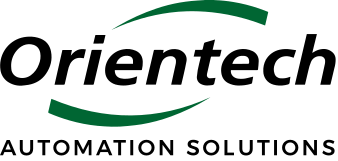For the best results, automation projects should be competitively priced and delivered on time to ensure a positive return on investment. However, manufacturers demand more value from automation equipment today, because they are under intense pressure to compete and control production costs. As automotive parts, consumer goods, electronics, medical devices, and other products get smaller and more complex, demand for automation continues to increase.
Unfortunately, the end user often repeats common automation mistakes because of time constraints and budget concerns. Engineers and projects teams can avoid these problems by taking into account the following potential problems, suggested by machine builders and systems integrators.
Lack of Real-Time Information
Accurate real-time information is the foundation of optimal production lines. Production and maintenance metrics give you visibility into your production line, so you can leverage automation, view production downturns, and achieve quantity, quality, speed, cost and profitability objectives.
Poor Production Quality
Access to the right real-time data also can help optimize product quality. Several factors contribute to poor quality. Production line visibility helps you pinpoint areas of concern so you can focus on remedying quality issues with training, maintenance, recalibration, and other tasks.
Excessive Downtime
From maintenance issues to fluctuation in demand, downtime is a hurdle that impedes productivity and continual improvement. With well-managed processes and full visibility of production, operations can better align with demand, and maintenance can be anticipated and scheduled in a manner that keeps your production lines minimally disrupted.
Diminished Returns from Lean Manufacturing
Your company touts continuous improvement, but if you’ve noticed diminishing returns from your Kaizen efforts, it is time to embrace automation. Combine all of your resources and talents efficiently with automation, and use the new “wins” in productivity to fuel future smaller steps towards greater productivity.
Unbalanced Station Workloads
Unbalanced workloads lead to bottlenecks and other production problems. These issues have a domino effect, reducing quality, quantity, speed, and more. The main causes of unbalanced station workloads are lack of visibility and systems that do not coordinate interlocked tasks.
Failure to Adapt to Changing Demand
Changing demand is an inevitable component of manufacturing. You can best manage demand fluctuations with in-depth process visibility, production optimization, and load balancing. Agility means the ability to efficiently use resources — to do so, you need to know what is happening with your production line at all times.
Excessive WIP and Changeover Time
When looking for ways to optimize your production line, look to your work-in-progress stage. A certain level of WIP is necessary, due to manufacturing requirements, but the goal should be to efficiently move these lines along as quickly as possible.
Similarly, inefficiencies can be found in the changeover from one product or component to another. Scrutinize these steps along the way and look for opportunities to reduce these downtime moments.
New Product Launch Slowdowns
Whether you are using a new production line or an existing manufacturing process, a new product can slow down operations. Some delay may be necessary, as new products can be accompanied with unknown variables, but an automated and visible production process helps manufacturers be nimble in their production.
These are just a few of the challenges the manufacturing engineers face in 2020. Fortunately, there are systems and applications available today that organizations can utilize to provide the user experience workers and customers expect, and the functionality and data organizations require to succeed.
Whatever the challenges may be, organizations cannot ignore them if they want to continue to ride the manufacturing resurgence.




